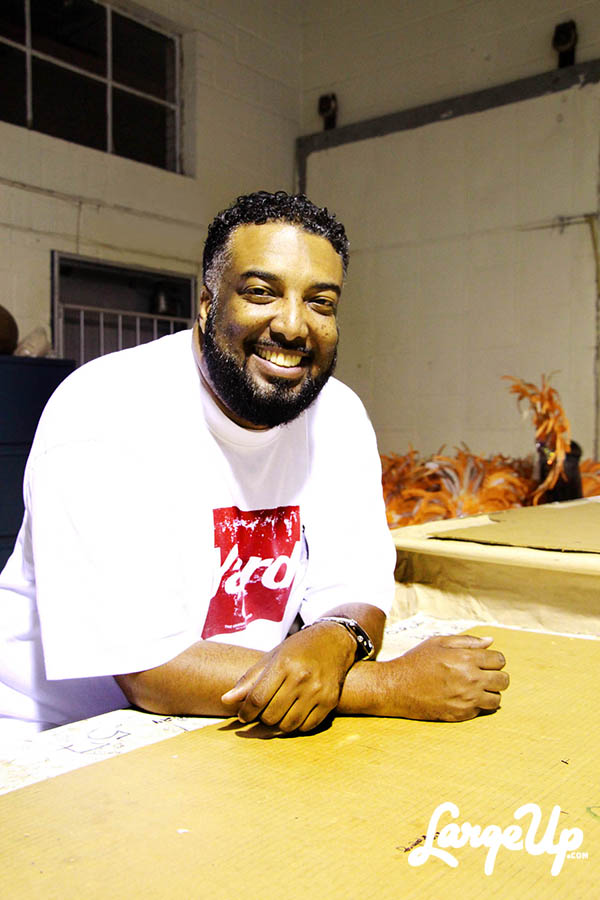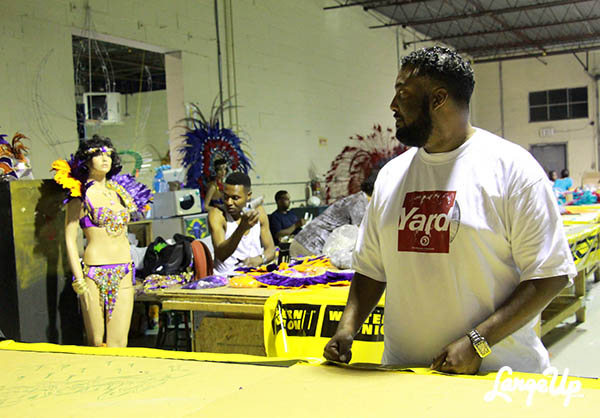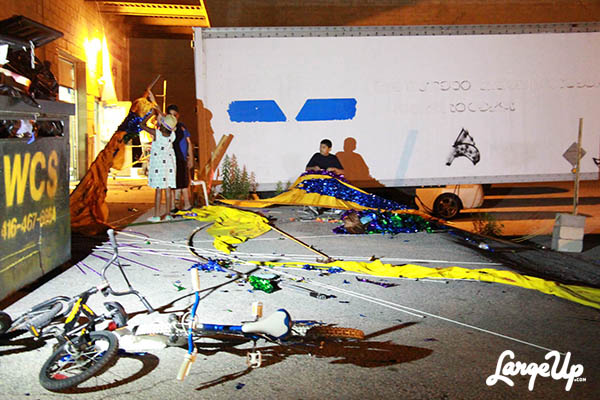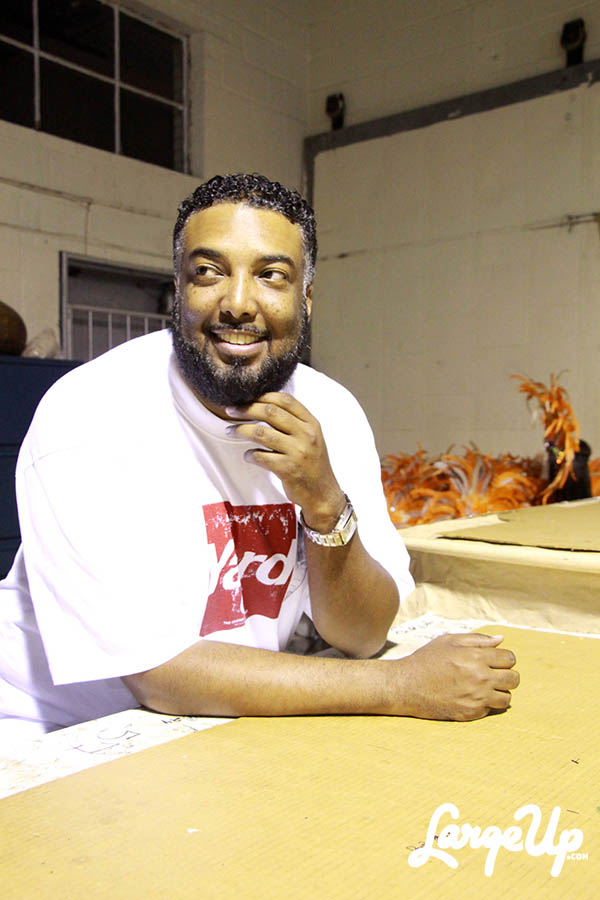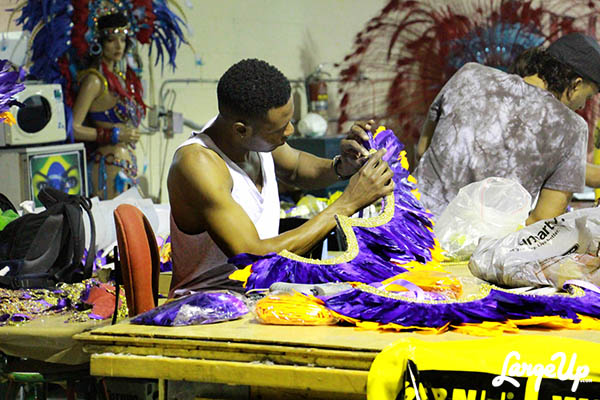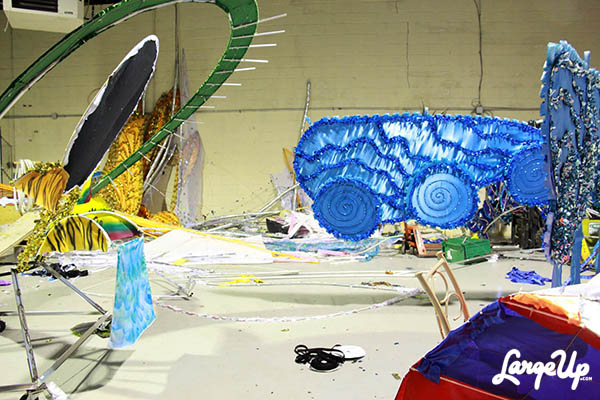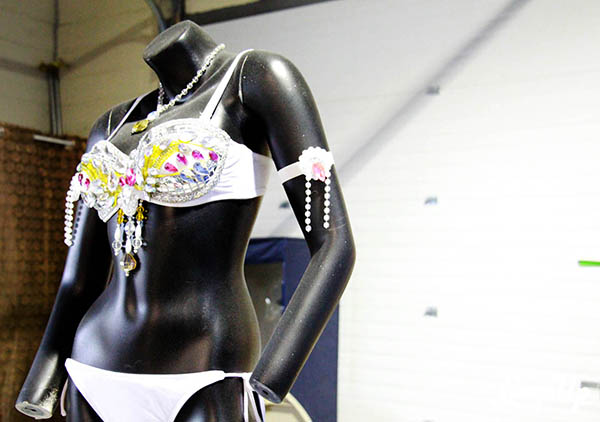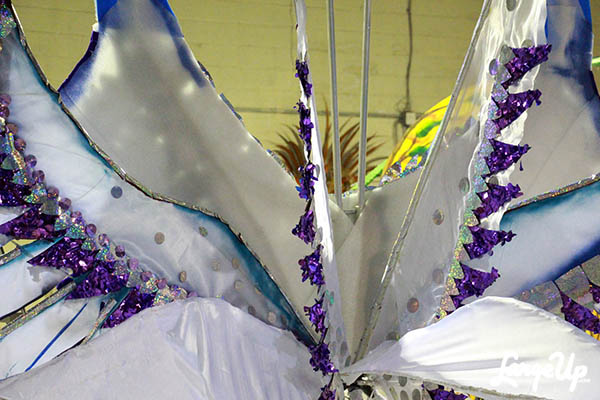
A volunteer works on the headpiece for Mythic Warrior, a section led by Curtis Aitchison, who has been involved in mas camps for over 30 years.
LU: It’s more of a cultural export that people are paying for.
DJDS: Yeah, and there’s a whole other dynamic around it. There’s the guy that sells Corn Soup or Bake and Shark outside the venue. This helps him earn a living. Because he knows there will be 100 to 1,000 more people and they want that. When people party downtown, they usually want to go to a Chinese spot or a hot dog stand. For us, a doubles man may be outside. They have a food truck now that comes to the events.
LU: Are you talking about Randy’s Roti?
DJDS: Yeah. We tell him where we’re playing and he asks “Jay, where you at this weekend? I gotta get my spot.” It’s a cultural experience. When I come out of a soca event and I don’t see any vendors, then the party wasn’t good. You need that to end it. I need that Caribbean vibe. Even smelling it when you come outside, like jerk on the grill. To me, that’s part of the whole experience of a soca event.
LU: Soca has evolved tremendously over the years. What makes it such a versatile genre?
DJDS: The music itself, some of the newer stuff, maybe experimenting with some EDM vibes, some people aren’t feeling that, they like it more traditional. Some people who are into Beres Hammond and Tarrus Riley cannot stand the Kartels and Alkalines. But with soca, you find that Machel can appeal to young and old. Bunji Garlin can appeal to young and old. Everybody loves “Differentology.” Everybody loves “Happiest Man Alive.” Or Destra, or Kes. That’s why we have Kes every year at Big People Fete. Even though he’s seen as a sex symbol to young ladies, the older demographic loves him and his performance. It’s something you find that’s much more accepting through all barriers.


